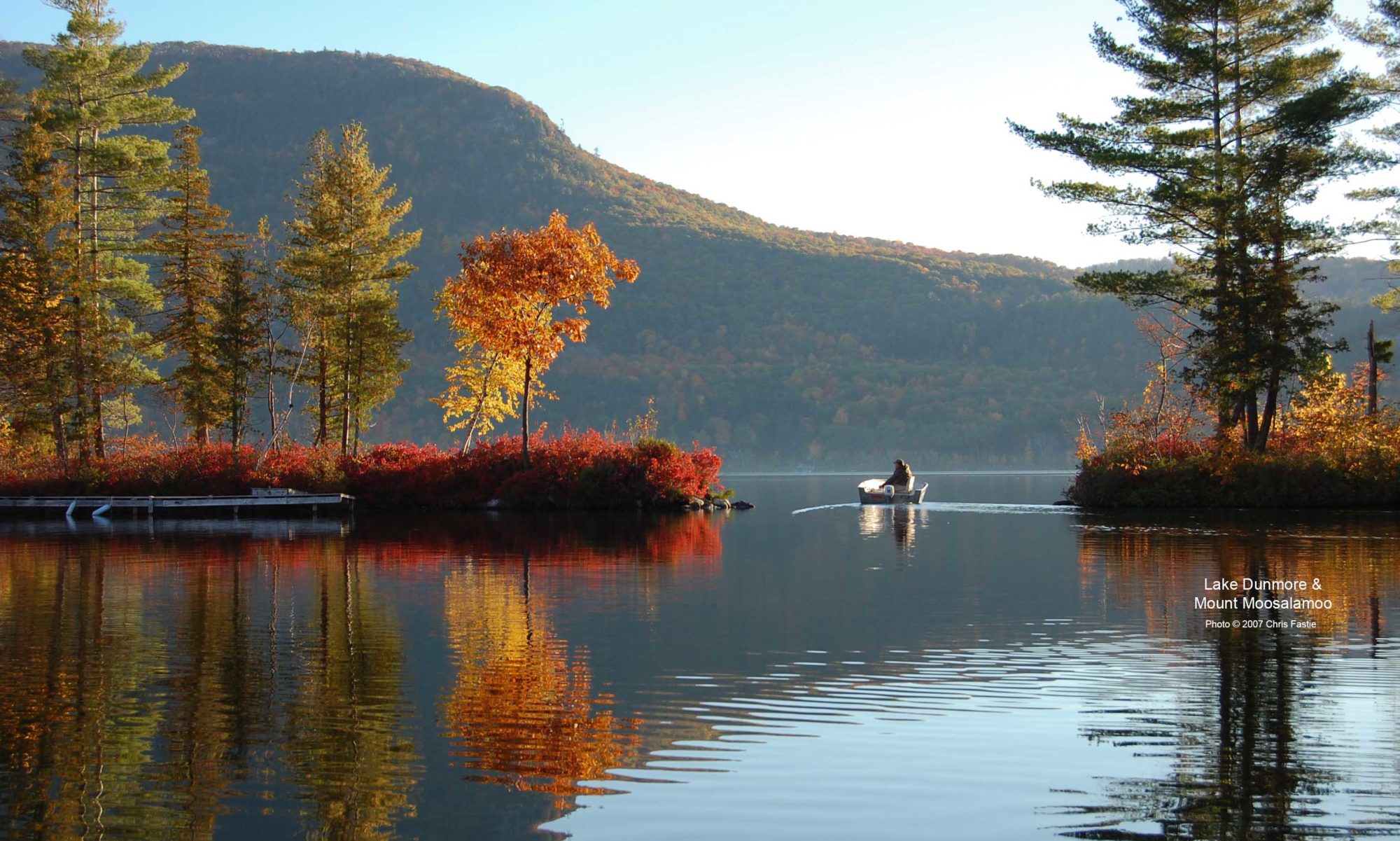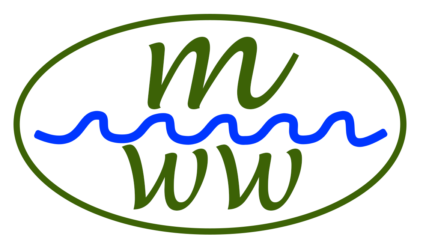Malathion, one of the two chemicals sprayed along roads in the BLSG District to kill mosquitoes, is an organophosphate pesticide. A new peer-reviewed study, published yesterday, concludes that organophosphate pesticide exposure in pregnant women can be responsible for a significant drop in IQ of their children. According to the study, in recent years, organophosphate pesticides and flame retardants have overtaken lead and mercury as the chemicals responsible for the biggest loss of IQ among children. The abstract of the study in Molecular and Cellular Endocrinology is here and a news article about the study is here.
Continue reading “New study links organophosphate pesticides to IQ loss”New long-term study links pyrethroids and health risk
Last month an article about the health effects of pyrethroid insecticides was published by the Journal of the American Medical Association (JAMA Internal Medicine). You can read a summary here and a news article here. The peer reviewed article describes the results of a study of 2116 nationally representative American adults who were followed for 17 years. At the beginning of the study each participant had a urine test for pyrethroids. During the study 246 of the participants died, and those with higher levels of pyrethroids at the start of the study were more likely to die. The group was divided into thirds (low, medium, and high levels of pyrethroids), and those in the high group were three times more likely to die from cardiovascular disease than those in the low group. Those in the high group were 1.5 times more likely to die of any cause compared to the low group.
Continue reading “New long-term study links pyrethroids and health risk”Vermont avoids New England’s big year for EEE
Southern New England had a big year for Eastern Equine Encephalitis in 2019. There were 20 reported human cases of the EEE virus (EEEv) in Massachusetts, Connecticut, and Rhode Island with nine deaths. This is the most cases in a decade including the last outbreak year of 2012. To the east and west of Vermont, New Hampshire and New York had no human cases of EEEv, but dozens of mosquito samples were positive for EEEv. Vermont did not have any human cases of EEEv in 2019, and no EEEv was found in 3217 samples of mosquitoes tested.
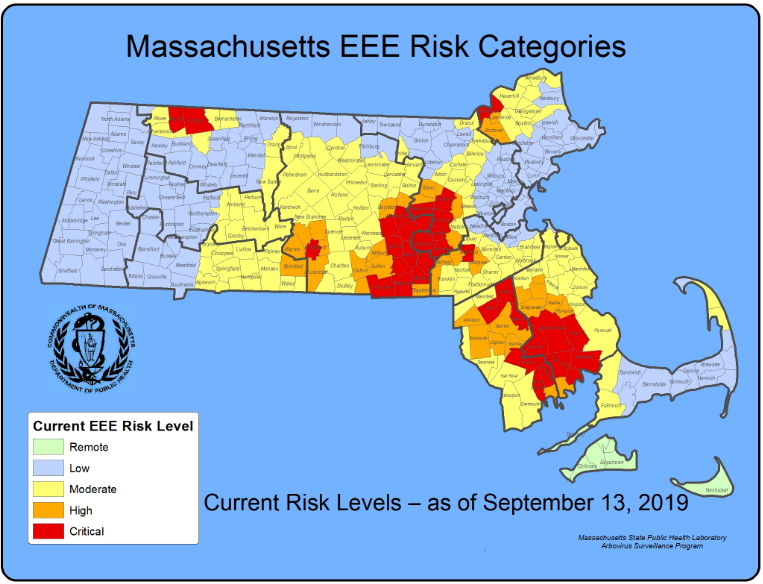
Summary of the Arrowwood Environmental report on bats
The Vermont Endangered Species Committee is currently evaluating a report about the potential harm to bats from the roadside spraying done in the BLSG Insect Control District. The report from Arrowwood Environmental is 19 pages long and details the science that suggests BLSG’s pesticides could harm or kill several species of bats on Vermont’s endangered species list. The report lists 70 scientific and agency references supporting its arguments and conclusions. Below is a summary of some of the main arguments in the report.
Continue reading “Summary of the Arrowwood Environmental report on bats”Nationwide support for the conclusions that BLSG pesticide spraying harms endangered bats
In August, a report from Arrowwood Environmental was submitted to the Commissioner of the Vermont Department of Fish and Wildlife. The report concludes that the roadside spraying of pesticides by the BLSG Insect Control District is likely to harm endangered or threatened species of bat. Six weeks later the Commissioner of VT F&W responded that he and his staff had read the report but decided that no action on their part was needed to protect listed species of bat. We learned that the Vermont Endangered Species Committee, which is charged with advising the VT F&W Commissioner on all matters concerning Vermont’s endangered and threatened species, had not seen the report. So we sent it directly to that committee and last week the report’s author presented a summary of his conclusions at a meeting of the committee.
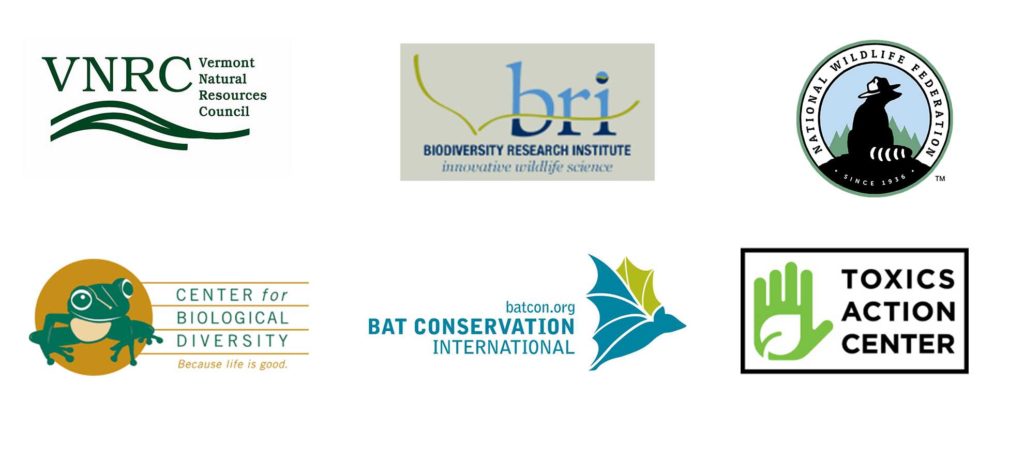
Vermont Endangered Species Committee to consider BLSG’s impact on bats
Last week the members of Vermont’s Endangered Species Committee had one of their four yearly meetings in Montpelier. Members of this committee include four Vermont biologists, three state bureaucrats, and two agronomists. Two items of local interest were on the agenda. There was an acknowledgement that Jim Andrews of Salisbury was the 2019 recipient of the Sally Laughlin Award. The award is given by the Vermont Agency of Natural Resources to recognize individuals who have advanced the knowledge, understanding, and conservation of endangered and threatened species and their habitats in Vermont. Jim has been involved in over 25 years of creative work in Vermont on reptile and amphibian conservation. Congratulations to Jim for this well deserved honor.
Continue reading “Vermont Endangered Species Committee to consider BLSG’s impact on bats”Do BLSG house calls violate their permit?
At BLSG board meetings the public is given an opportunity to comment or ask questions at the beginning of the meeting. At the July 18, 2019 meeting, Barb Karle from Salisbury asked a few questions about the visits BLSG makes to private homes in response to calls from residents about mosquitoes. Barb asked:
- How many of these home visits are made?
- Do you use the approach of Craig Zondag at the Lemon Fair District and find the mosquito breeding areas on the private property and treat them with larvicides?
- Before adulticides are sprayed, is a test done to see if the adult mosquito population meets the action threshold for spraying adulticides?
These are good questions. By the time Ben Lawton (Board Chair) and Will Mathis (Operations Manager) finished avoiding Barb’s questions, they had contradicted each other, changed their answers, squirmed a bit, and tried to change the subject more than once.
Continue reading “Do BLSG house calls violate their permit?”Why was there no aerial larvicide treatment this spring?
A post on Front Porch Forum yesterday suggested that maybe BLSG “ran out of money because of the lawsuit this year and weren’t able to larvicide as usual.”
There is no evidence that BLSG’s decision not to do aerial larvicide treatment this year is a result of the lawsuit. BLSG could not afford to do aerial larvicide treatment in all the District towns last year either. They could afford to treat only 3000 of the 6000 treatable acres in the District in the spring of 2018, and that was well before the lawsuit began.
Continue reading “Why was there no aerial larvicide treatment this spring?”Mosquito control: A taxpayer’s perspective:
This post by Rebecca Holmes of Salisbury appeared at Front Porch Forum today.
As someone who pays taxes to both my town and the state, I have two priorities when it comes to local mosquito control: (1) I want the most effective, safest mosquito control method to be applied as widely as possible. (2) I also want ALL my money spent on the control method that best reduces mosquito populations. The organization currently making the choices as to what’s used, where, and thus how our money is spent is the Brandon, Leicester, Salisbury, Goshen, Pittsford Insect Control District (BLSGP), and they appear to be driven more by the past than the present.
Mosquito control a safer way
This commentary was posted at VTDigger today.
This commentary is by Michael Shank, of Brandon, who is the communications director for the Carbon Neutral Cities Alliance and the Urban Sustainability Directors Network. He serves on Brandon’s planning commission and energy committee.
Last month, a settlement was reached between the state of Vermont’s Agency of Natural Resources, Vermont’s Toxics Action Center office, and the Brandon-Leicester-Salisbury-Goshen-Pittsford Insect Control District, where I live. While it technically ends a legal dispute over pesticide spraying in Vermont, which originated due to concerns filed by Vermont Law School that the insect district failed to adequately “evaluate the impact on water quality and non-target aquatic organisms” from its spraying of chemicals, the concerns for many landowners in Brandon remain unresolved.
Continue reading “Mosquito control a safer way”End run around the PGP fails
There are two agriculture bills bouncing around the Vermont Legislature right now. One started in the House (H.525) and one in the Senate (S.160). Last week the Republican Legislators representing Brandon and Pittsford (Collamore and Shaw) moved to insert new language into these bills to weaken state oversight of insect control districts which spray pesticides. There is only one insect control district in Vermont which sprays pesticides, so the impetus for the new language is assumed to be the leadership of the BLSG District (which includes Brandon and Pittsford).
Salisbury’s pesticide-free amphibian crossing site
This last weekend was good for amphibians in the Champlain Valley. Rain after dark with warm temperatures brought the early breeding frogs and salamanders above ground and coaxed them downhill toward breeding areas.
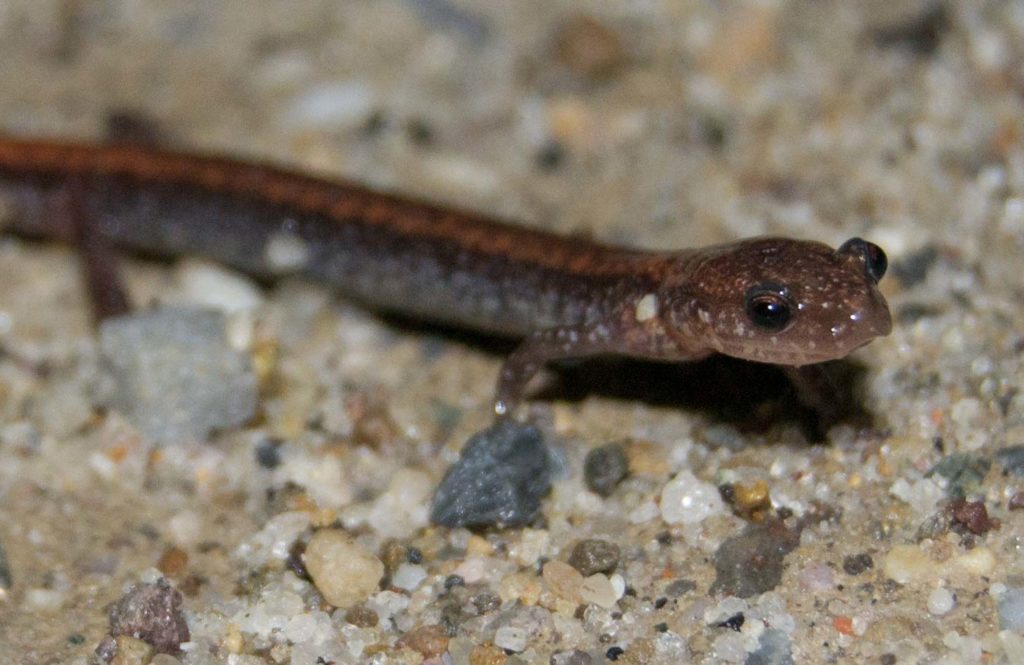
Continue reading “Salisbury’s pesticide-free amphibian crossing site”
Malathion and Endangered Species
This post by Brian Carter of Salisbury appeared today on Front Porch Forum.
This post is to bring more information to the discussion about the mosquito spray program, particularly the use of malathion, in Salisbury.
I live on Morgan Road and part of my property has been placed in a conservation easement to protect a unique concentration of salamanders. Four species, as well as frogs, spend the winter on this easement and migrate across the road in spring. This has become an event that attracts many people on a few designated nights each year to count and help move the amphibians across the road and out of any traffic.
New study of pesticides and autism
Last week a new scientific article was published about the relationship between pesticides and autism spectrum disorder in California. The study confirmed that prenatal or infant exposure to pesticides, including malathion and permethrin, increased the likelihood of developing autism spectrum disorder in childhood. Malathion and permethrin are the two pesticides sprayed along roads to kill adult mosquitoes in the BLSG Insect Control District. The article was published in the BMJ, a peer-reviewed journal of the British Medical Association.
Protect your pollinators from BLSG
BLSG drives their spray trucks along the entire length of private driveways and sprays pesticides. They have defended their authority to do this uninvited, unannounced, and without permission. Not all driveways are sprayed, and choosing which ones get sprayed appears to be left to the whim of the driver.
Last summer, a BLSG truck sprayed the driveway of Dennis Reisenweaver of Brandon. The next day he noticed that all of the honey bees in his beehive were dead. At a Select Board meeting in Brandon last month, Mr. Reisenweaver told this story to Ben Lawton, the chairman of the BLSG Board of Directors: “I lost a hive of honey bees. I had the State come out and they took samples and they told me that it was because of the spraying. So, I’m wondering why they come up private driveways. Why not just stay on the town roads?”
Kodak Carousel
Last week the Addison Independent ran an article about the BLSG lawsuit. This was the only news article the paper published in a period of multiple editorials and letters to the editor about the subject. Both editorials and one letter claimed that there was much misinformation at the Moosalamoo Woods & Waters website without ever citing an example of even a typo.
Here are some of the factual errors in the recent Addison Independent article, the only news article the newspaper has published recently about BLSG.
The BLSG Adulticiding Program: Fear mongering, mission creep, and questionable use of taxpayer dollars
The following is a letter by Kip Andres of Salisbury. It was submitted to the Addison Independent as a letter to the editor on Sunday March 3.
I am writing this letter in response to Angelo Lynn’s editorial addressing the lawsuit pending against the Brandon Salisbury Leicester Goshen (BLSG) Insect Control District. Insect control efforts as carried out by the BLSG are complicated, and I can’t adequately comment on the BLSG’s history, State permitting and oversight, and action thresholds in the detail they deserve here. For anyone interested in learning more about these topics, I urge them to consult http://mwwvt.org/, which contrary to Lynn’s assertion, is a useful source of information. They should also attend the BLSG’s meetings. While the BLSG seeks to avoid public scrutiny, the group is funded by taxpayer dollars and is, at least in theory, operating at the behest of its member towns. With this in mind, it is the public’s right to attend monthly board meetings and to have knowledge of its activities. The fact that Salisbury has just appointed two extremely competent and qualified representatives to the board means that interested citizens will be more welcome at meetings than they have been in the past.
I choose Relentless Opponent
It was good to see my post on bats published as a letter to the editor in the Addison Independent yesterday. It’s important for local residents to be aware that routine practices of the Brandon Leicester Salisbury Goshen Insect Control District (BLSG) could have serious environmental impacts which the residents are ultimately responsible for. I was also pleased that the owner/publisher/editor of the Independent, Angelo Lynn, recognized the importance of the topic and wrote a related editorial for the same issue (Insect Control District’s mistake, or a nuisance suit by a relentless opponent?). My pride swelled with every mention of my name until after a dozen of them when I recognized that the editorial was not about bats or BLSG but about me.
How bad was it back then?
There has been a good recent discussion on Front Porch Forum about mosquito control in the Brandon Leicester Salisbury Goshen area. The discussion reveals a common sentiment in the community that mosquitoes in the BLSG District were much worse before BLSG mosquito control began. This idea is then associated with another idea, that BLSG’s activities are responsible for the improvement. Here are a few things to keep in mind when evaluating these claims.
Which towns does BLSG treat properly?
In BLSG’s new annual report, they indicate that there are 7,000 acres of mosquito breeding ground in the BLSG District which can be treated by helicopter. Most of this is in the floodplain of Otter Creek or Leicester River or in nearby lowland areas. The goal is to use a helicopter to spread granules of bacterial larvicide over this area.
BLSG reports that in 2018 only 3,000 acres received aerial treatment of larvicide. BLSG explains that the reason more than half of the mosquito breeding ground got no aerial treatment in 2018 is that the state did not allocate enough money. This seems like a very serious failure of the system.
